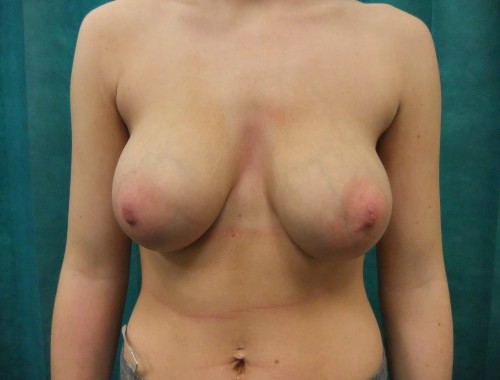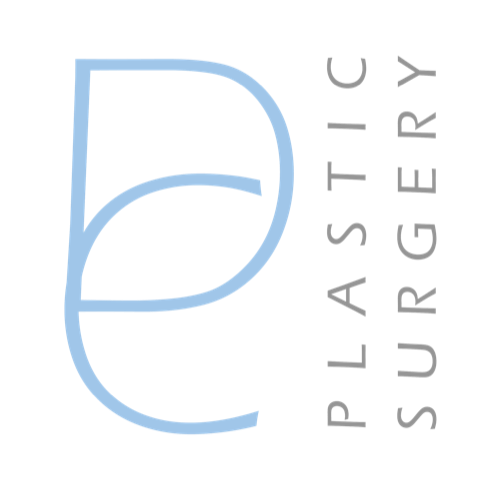Other Breast Procedures

Other breast implant procedures
Mr Chester carries out other procedures for patients who have had breast implants inserted.
He regularly sees patients for consultations to offer advice on whether further surgery is advisable. If you are considering having further surgery, it is always helpful to try and obtain as much information about your previous implants as possible. Please contact the private hospital where you have been treated. Mr Chester will assess you by taking a history and performing a breast examination. In some cases, an MRI scan can be arranged to provide further information.
It is important that if you have found any breast lumps, develop enlargement or pain that you talk to your GP, who can decide whether you need to be assessed in an NHS breast clinic in the first instance.
Removal of implants
Some patients get to the stage in their lives when they no longer want to have breast implants. In most cases implant removal is performed as a day case under general anaesthetic. The existing scars are used to gain access to the implants. Once the implants are removed, the pockets are washed out and the wounds are restitched. Mr Chester can assess you for this procedure and will carefully counsel you as to the potential risks and consequences of this operation. The breasts will inevitably lose some fill and drooping may be worsened. He will also talk to you about the advantages and disadvantages of performing uplift surgery at the same time as implant removal. The decision as to whether an uplift is performed is entirely down to the patient’s wishes. Some patients prefer not to have scars on the breast and will tolerate the cosmetic changes that occur when the implants are removed. The implant size and the patient’s build, including the amount of breast tissue present will have a bearing on the cosmetic result.
Recovery following breast implant removal is usually quicker than your original breast augmentation unless uplift surgery is performed. Mr Chester will advise you on the likely recovery period with and without uplift surgery.
Before and after photographs
Here are some examples of patients following removal of implants and breast uplift surgery performed by Mr Chester.
Before and after (8 months post-op) photographs of patient following removal of 460cc implants and breast uplift surgery. Scars will continue to fade of the next 6-12 months.
Before surgery
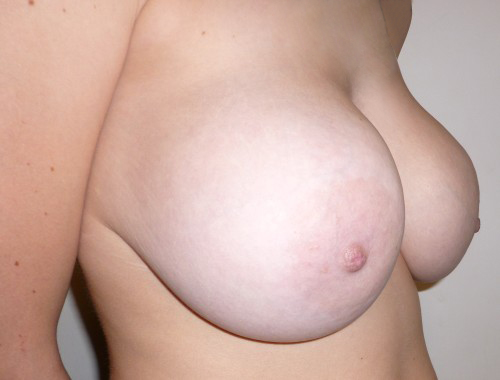
After surgery
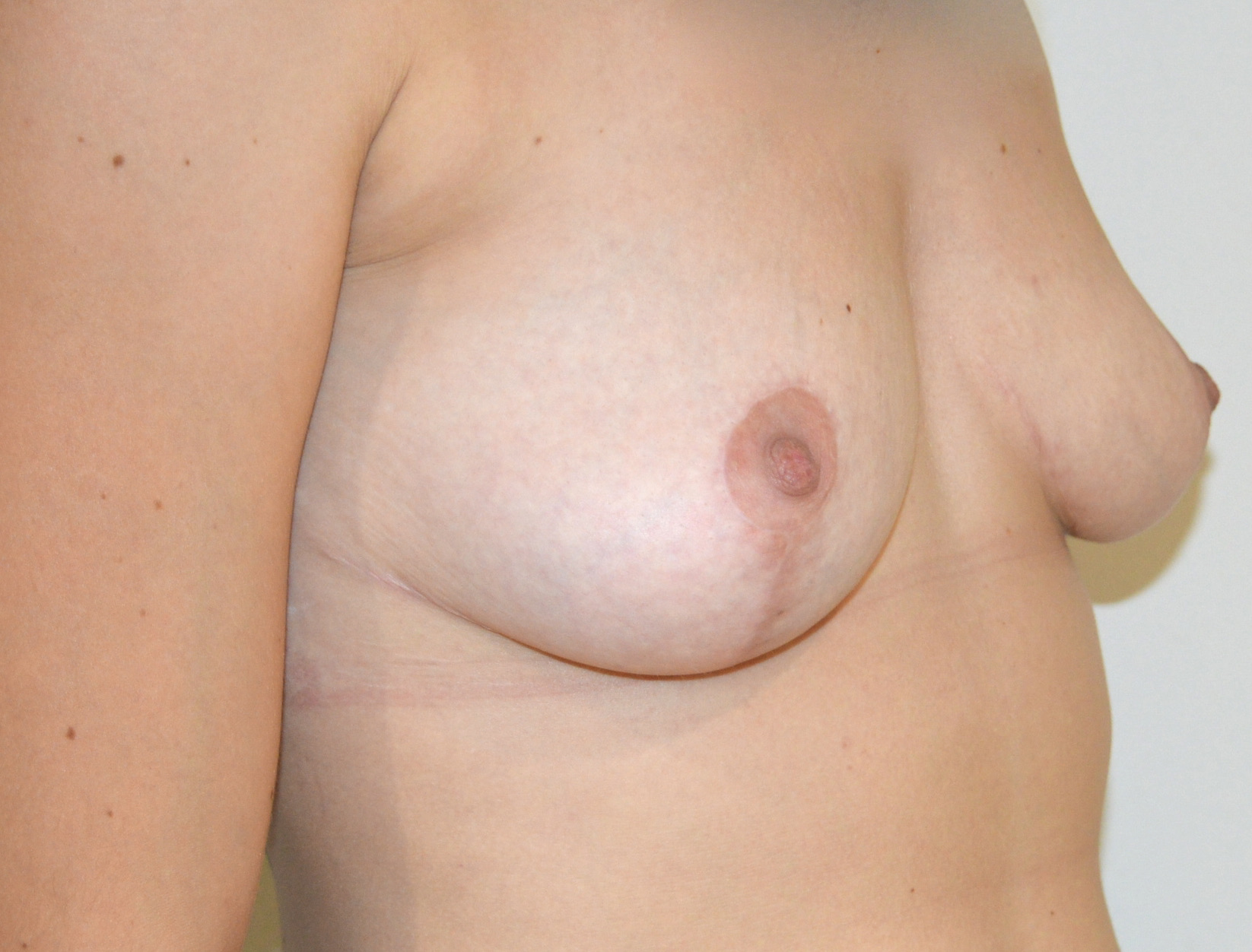
Before and after photographs of a patient who has had removal of breast implants without uplift surgery.
Before surgery
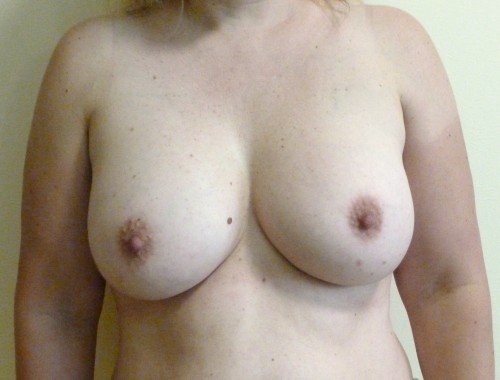
After surgery
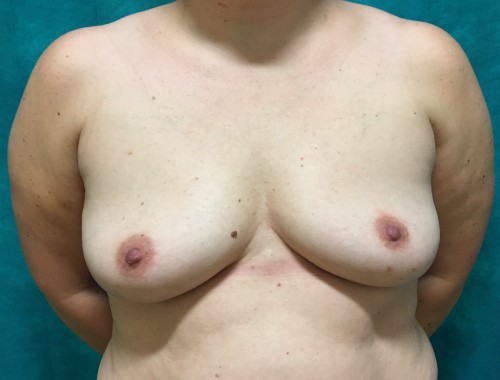
Exchange of breast implants
Although there are no strict rules, It is generally advised that breast implants are exchanged every 10-15 years. With time, implant shells wear and this can lead to complications such as silicone leakage into the breast and capsular contracture (the development of a hard layer around breast implants). Mr Chester regularly sees patients for assessment of breast implants. He can provide an honest opinion on the advantages and disadvantages of further surgery. During breast implant exchange there is an opportunity to change the position of implants and also change size according to patients wishes. Uplift surgery can also be performed at the same time where required.
Before and after photographs (at 8 months) following exchange of breast implants. Previously had breast augmentation and uplift surgery with another surgeon. The implants had been placed under the pectoral muscles and were sitting high with a visible waterfall effect (the lower breast tissue is drooping off the implants). Breast implants exchanged by Mr Chester (325cc changed to 390cc). Implants were lowered and converted to a dual plane (partly under the muscle) to allow them to sit better.
Before surgery

After surgery
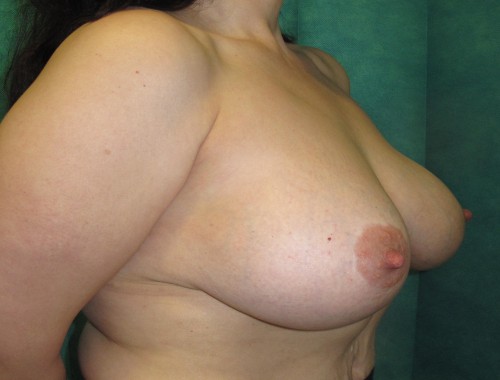
Capsulectomy and exchange of implants
Capsular contracture is the process whereby a thickened layer forms around breast implants leading to hardening, shape change and in some cases pain. Approximately 1 in 10 patients after 10 years can develop this condition. The mainstay of treatment for capsular contracture involves surgical removal of this layer (capsulectomy) together with implant replacement. Capsulectomy is performed under general anaesthetic (put to sleep) and can take between 2-3 hours to perform. Patients sometimes use this as an opportunity to change their size of implants or have an uplift if needed. Capsulectomy surgery is therefore more extensive than breast implant insertion or exchange. Patients frequently require drains (plastic tubes) that come out of the sides of the chest to take away excess blood and fluid from the breasts. The drains are removed before the patient goes home.
Before and after photographs of patient with 260cc implants and capsular contracture causing pain, hardening and shape change in both breasts, particularly on the left hand side. Capsulectomy and exchange of implants (365cc) performed. Post-operative operative photographs have been taken after 6 months. Breasts are soft and have more natural shape.
Before surgery

After surgery
